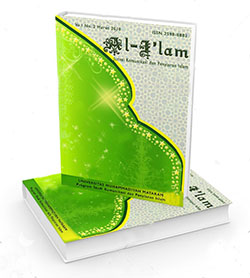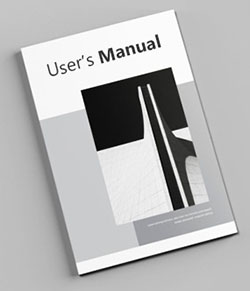Analisis Sentimen Penonton Pada Video Habib Ja’Far Melalui Aplikasi MAXQDA
Abstract
Abstrak: Jeda Nulis adalah sebuah channel Youtube milik ulama muslim muda ternama di Indonesia yaitu Habib Husein Ja’far Al Hadar. Adapun isi konten – konten dakwah Habib Ja’far Al Hadar antara lain memiliki sasaran para kaum muda muda millennial di Indonesia. Salah satu contohnya adalah konten video yang berjudul “Avenger Endgame” yang berisi obrolan para beberapa pemuka agama di Indonesia yang membahas tentang Toleransi Beragama. Tujuan dari penelitian ini adalah untuk mengetahui bagaimana respon Netizen Indonesia dalam menyikapi dan berkomentar dalam konten tersebut yang dimana tema dari konten tersebut cukup sensitif bagi beberapa masyarakat. Metode penelitian yang digunakan adalah metode analisis sentimen dengan dibantu menggunakan aplikasi MAXQDA. Konten yang berjudul “Avenger Endgame” tersebut tentunya dapat membuat prespektif baru dalam konteks Toleransi Beragama di Indonesia, bagaima respon Netizen Youtube Indonesia apakah setuju atau tidak setuju tentang pesan – pesan yang di sampaikan tentang Toleransi Beragama dalam konten tersebut.
Abstract: Jeda Nulis is a Youtube channel owned by a well-known young Muslim cleric in Indonesia, namely Habib Husein Ja'far Al Hadar. The content of Habib Ja'far Al Hadar's proselytizing content, among others, has the target of young millennial young people in Indonesia. One example is the video content entitled "Avenger Endgame" which contains chats between several religious leaders in Indonesia discussing Religious Tolerance. The purpose of this study is to find out how Indonesian netizens respond to and comment on the content where the theme of the content is quite sensitive for some people. The research method used is the sentiment analysis method assisted by the MAXQDA application. The content entitled "Avenger Endgame" can certainly create a new perspective in the context of Religious Tolerance in Indonesia, such as the response of Indonesian Youtube Netizens whether they agree or disagree about the messages conveyed about Religious Tolerance in the content
Keywords
Full Text:
PDFReferences
C. Dabas, P. Kaur, and N. G. (2020). Analisis Komentar di Video Youtube menggunakan Hadoop. Conference: 2019 Fifth International Conference on Image Information Processing (ICIIP). https://doi.org/10.1109/ICIIP47207.2019.8985907
E. Chandra. (2017). Youtube, Citra Media Informasi Interaktif Atau Media Penyampaian Aspirasi Pribadi. Jurnal Muara Ilmu Sosial, Humaniora, Dan Seni, 1(2), 406–417. https://doi.org/https://doi.org/10.24912/jmishumsen.v1i2.1035
Eighmey, J., & McCord, M. (1998). Adding Value In The Information Age: Uses & Gratifications Of Sites On The World Wide Web. Journal of Business Research. Journal of Business Research, 41(3), 187–194.
Katz, E., Blumler, J. G., & Gurevitch, M. (1974). Utilization Of Mass Communication By The Individual. The Uses of Mass Communications. In Current Perspectives on Gratifications Research.
Katz, E. (1959). Mass Communication Research & The Study Of Culture. Studies in Public Communication, 2(1), 1–6.
Kaye, B. K., & Johnson, T. J. (2001). A Web For All Reasons: Uses & Gratifications Of Internet Resources For Political Information. Association for Education in Journalism & Mass Communication Conference Washington, USA.
Luo, X. (2002). Uses & Gratification Theory & E-Consumer Behaviours: A Structural Equation Modelling Study. Journal of Interactive Advertising, 2(2), 34–41.
Mehta, D., & Wang, X. (2020). COVID-19 and digital library services – a case study of a university library. Digital Library Perspectives, 36(4). https://doi.org/10.1108/DLP-05-2020-0030
Ni’matul Rohmah, N. (2020). Media Sosial Sebagai Media Alternatif Manfaat dan Pemuas Kebutuhan Informasi Masa Pandemik Global Covid 19 (Kajian Analisis Teori Uses And Gratification). Al-I’lam: Jurnal Komunikasi Dan Penyiaran Islam, 4(1), 1–16. https://doi.org/10.31764
Nurliya Ni’matul Rohmah. (2023). Interpretation of Media System Dependency Theory on FinancialTechnology. Jurnal ASPIKOM, 8(1), 153–168. https://doi.org/http://dx.doi.org/10.24329/aspikom.v8i1.1186
O. N. Rahim. (2014). Analisis Sentimen Untuk Mengukur Popularitas Tokoh Publik Berdasar Data Pada Media Sosial Twitter Menggunakan Algoritma Datamining Dengan Teknik Klasifikasi. Jurnal Informasi, VI(2), 56–87.
R. Kurniawan, F. Lestari, Abdul Somad Batubar, Mohd Zakree Ahmad Nazri, K. Rajab, and R. M. (2021). Indonesian Lexicon-Based Sentiment Analysis of Online Religious Lectures Review. International Congress of Advanced Technology and Engineering (ICOTEN), 1–5. https://doi.org/https://doi.org/10.1109/ICOTEN52080.2021.9493530
Rahadi, D. R. (2017). PERILAKU PENGGUNA DAN INFORMASI HOAX DI MEDIA SOSIAL. JURNAL MANAJEMEN DAN KEWIRAUSAHAAN, 5(1). https://doi.org/10.26905/jmdk.v5i1.1342
Rayburn, J. D. (1996). Uses & gratifications. An Integrated Approach to Communication Theory & Research. In Lawrence Erlbaum Associates.
Rubin, A. M. (1994). An Examination Of Television Viewing Motives. Journal of Communication, 8(3), 141–165.
Ruggiero, T. E. (2000). Uses & Gratifications Theory In The 21st Century. Mass Communication & Society, 3(1), 3–37.
West, R. (2014). Pengantar Teori Komunikasi Analisis dan Aplikasi Edisi 3 (9th ed.). Salemba Humanika.
William L. Rivers, dkk. (2003). Media Massa & Masyarkat Modern. Kencana.
DOI: https://doi.org/10.31764/jail.v7i1.19356
Refbacks
- There are currently no refbacks.
Copyright (c) 2023 Muhammad Saiq Kamal Faza, Amrullah Ali Moebin

This work is licensed under a Creative Commons Attribution-ShareAlike 4.0 International License.
Al-I’lam: Jurnal Komunikasi dan Penyiaran Islam
Fakultas Agama Islam Universitas Muhammadiyah Mataram.
Alamat Redaksi:
Jln. KH. Ahmad Dahlan No. 1 Pagesangan – Mataram
Telpon 085946008096 | email: [email protected]
INDEXED BY:

.png)
2.png)


























